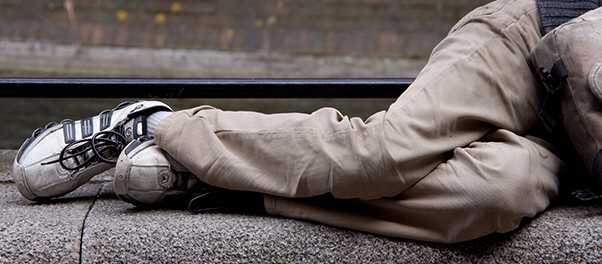- eHealth Interventions: Bridging the Gap in Access to Care
- Enhancing Whole-School Interventions: Nurturing Educational Support
- Self-Compassion: A Holistic Approach to Health Interventions
- Criminal Justice and the Intersection with Poverty, Homelessness, and Health Outcomes
- Conclusion
- Additional Resources
eHealth Interventions: Bridging the Gap in Access to Care
eHealth interventions are digital tools and platforms that leverage technology to improve access to care and service delivery. For persons experiencing homelessness, traditional healthcare systems can be inaccessible or difficult to navigate due to various barriers, including transportation issues and stigma. eHealth interventions provide a potential solution to bridge this gap and offer more convenient and tailored healthcare services.
These interventions can include telemedicine services, mobile health apps, and web-based resources that offer medical information, mental health support, and resources for essential needs like food and shelter. They can also assist individuals in scheduling appointments, tracking medications, and monitoring health conditions, all from the convenience of a smartphone or a public computer.
Crucially, eHealth interventions have shown feasibility and usability for individuals experiencing homelessness, as many have access to smartphones or public internet terminals. By integrating these technologies into outreach programs and community health services, healthcare providers can engage with this vulnerable population more effectively, thus potentially reducing health disparities and improving overall health outcomes.
Enhancing Whole-School Interventions: Nurturing Educational Support
Homelessness can significantly impact a child's education and emotional well-being. Students experiencing homelessness often face school disruptions due to frequent moves and a lack of stable living environments. As a result, they may struggle academically and experience social isolation, which further contributes to the cycle of poverty and homelessness. The U.S. Department of Education reported a national graduation rate of around 64% for homeless students, 78% for low-income students, and a national average of over 85%.
Enrolling in higher education can be particularly challenging for homeless students due to financial constraints, lack of support, and the need to balance education with housing and employment concerns. Homeless students may be less likely to pursue higher education due to these barriers, but many organizations and initiatives aim to increase access for this population. However, data on higher education enrollment and completion rates specifically for homeless students might not be as readily available as K-12 graduation rates.
Whole-school interventions aim to create a supportive and inclusive school environment for all students, including those experiencing homelessness. These interventions foster a positive school climate emphasizing empathy, understanding, and tailored support for students with diverse backgrounds and challenges.
Schools can implement various strategies, such as providing access to counseling services, creating mentorship programs, offering after-school support, and addressing the specific needs of homeless students, including food assistance and access to hygiene facilities. By nurturing a sense of belonging and support within the school community, students experiencing homelessness can better cope with their circumstances and achieve educational success, ultimately breaking the cycle of poverty.
Implementing strategies to support students experiencing homelessness, such as offering counseling services, mentorship programs, after-school support, and addressing specific needs, has shown promise in positively influencing graduation rates and GPAs. These strategies are integral components of comprehensive initiatives that foster vulnerable students' academic success and well-being. However, the degree of effectiveness associated with these strategies is not uniform. It can significantly vary due to many factors, such as how a school implements these strategies, the local environment, the demographic composition of the student body, and the availability of resources. Consequently, gauging the precise impact of these strategies can be challenging. While specific numerical figures may not be universally applicable, general trends suggest the potential positive effects of these efforts.
- Access to Counseling Services: Counseling services for homeless students have improved school attendance, behavior, and academic outcomes. Chapin Hall at the University of Chicago found that students who received counseling services were more likely to graduate high school than those who did not.
- Mentorship Programs: Research suggests that mentorship programs can increase the likelihood of students completing high school and pursuing post-secondary education. For instance, the "Big Brothers Big Sisters" program reported that students in their mentorship program were 52% less likely to skip school.
- After-School Support: After-school programs have been linked to improved academic performance and increased engagement among homeless students. These programs can contribute to better study habits, completion of assignments, and higher GPAs.
- Addressing Specific Needs: Providing resources like food assistance, hygiene facilities, and transportation support can directly impact attendance and engagement. While specific percentages may vary, addressing basic needs will likely improve school participation and academic outcomes.
- Sense of Belonging and Support: Creating a supportive school environment can increase student engagement, often leading to improved GPAs and higher graduation rates. When students feel connected and supported, they are more likely to stay motivated and invested in their education.
Self-Compassion: A Holistic Approach to Health Interventions
When it comes to health interventions for individuals experiencing homelessness, self-compassion offers a transformative approach. Self-compassion involves treating oneself with the same kindness, care, and understanding that one would provide to a friend in times of difficulty. For those struggling with poverty, homelessness, and poor health outcomes, self-compassion offers a much-needed avenue to address emotional, physical, and psychological well-being.
Living in poverty and experiencing homelessness can lead to shame, guilt, and self-blame, further deteriorating an individual's health. Individuals can learn to acknowledge their challenges without judgment by cultivating self-compassion and resilience.
Practicing self-compassion can also encourage balanced self-care, ensuring individuals attend to both their physical and emotional needs. Instead of neglecting their health due to life's demands, they can learn to prioritize self-care without overindulging or ignoring either dimension of their well-being.
Criminal Justice and the Intersection with Poverty, Homelessness, and Health Outcomes
The issues of poverty, homelessness, and poor health outcomes are closely intertwined with the criminal justice system. Individuals experiencing homelessness are disproportionately represented in the criminal justice system due to a range of complex factors, including economic instability, mental health challenges, and limited access to resources. This section will explore the intersection of criminal justice with poverty, homelessness, and health outcomes and highlight the need for holistic interventions.
- Criminalization of Homelessness: In many communities, homelessness is criminalized through laws and ordinances prohibiting activities such as sleeping in public spaces, panhandling, or loitering. These measures often lead to individuals experiencing homelessness becoming involved with the criminal justice system, creating a cycle of legal involvement and incarceration.
- Mental Health and Substance Use: Many individuals within the criminal justice system have co-occurring mental health and substance use disorders. Homelessness exacerbates these challenges, as access to mental health services and addiction treatment is limited. Instead of receiving appropriate care, individuals often find themselves incarcerated, where their mental health deteriorates further.
- Healthcare Disparities: Individuals experiencing homelessness face significant barriers to accessing healthcare. In the criminal justice system, the stress of incarceration can exacerbate existing health conditions.
- Reentry Challenges: For those who have been incarcerated, reentering society while experiencing homelessness presents formidable challenges. Finding stable housing and necessary healthcare services is crucial for successful reintegration, but these resources are often scarce for this population. Individuals are at a higher risk of reoffending and cycling back into the criminal justice system without support.
- Holistic Interventions: To address these complex issues, holistic interventions are essential. Comprehensive support programs that combine housing assistance, mental health services, addiction treatment, and legal assistance can significantly reduce homelessness among justice-involved individuals. These programs aim to break the criminal justice involvement and homelessness cycle by addressing the root causes.
- Diversion Programs: Diversion programs within the criminal justice system can redirect individuals away from incarceration and toward community-based services. These programs often prioritize rehabilitation over punishment.
- Collaboration and Policy Change: Achieving lasting change requires collaboration between criminal justice agencies, healthcare providers, social services, and policymakers. Policy changes that decriminalize homelessness, prioritize mental health and addiction treatment, and expand access to affordable housing can create a more compassionate and effective system.
Conclusion
Addressing poverty, homelessness, and poor health outcomes demands multi-faceted solutions. Integrating eHealth interventions, whole-school support, and self-compassion practices can help break the cycle of adversity for individuals experiencing homelessness. Simultaneously, comprehensive reforms, diversion programs, mental health and addiction treatment, and housing access within the criminal justice system are essential steps to improve health outcomes and overall well-being. By recognizing the complexity of these challenges and embracing holistic interventions, we can strive for a more inclusive, compassionate, and just society, offering everyone the chance to lead healthier, more fulfilling lives. Together, these efforts promise to transform vulnerable populations' lives and build a brighter, more equitable future for all.






















